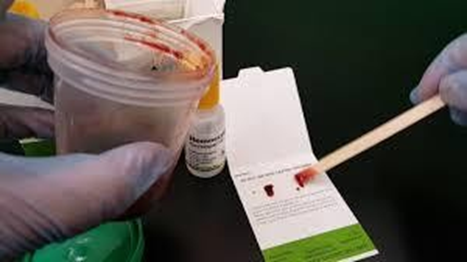The nurse is obtaining morning vital signs and assessing a 64 year old female client who was admitted with community acquired pneumonia over night. The client is sleeping in supine position, however, she is easily arousable, alert and oriented, and reports no complaints at this time. The client's vital signs are: blood pressure 132/68, heart rate 88 beats per minute, respiratory rate 24 breaths per minute. O2 saturation 87% on 2L nasal cannula oxygen. What is the nurse's first priority action?
Begin oxygen via face mask at 5L/min
Call the physician and report vital signs
Raise the head of the bed
Administer albuterol nebulizer as ordered
The Correct Answer is C
A. Increasing oxygen via face mask may be necessary, but raising the head of the bed is the initial priority to improve oxygenation.
B. Reporting vital signs is important, but immediate intervention is needed to address the low oxygen saturation.
C. Raising the head of the bed helps improve lung expansion and oxygenation in pneumonia patients by reducing pressure on the diaphragm.
D. Administering albuterol may be part of the plan, but improving the client's position is the immediate priority.
Nursing Test Bank
Naxlex Comprehensive Predictor Exams
Related Questions
Correct Answer is B
Explanation
A. Soreness and redness may occur with new ostomies, but persistent irritation may indicate a problem.
B. Red, irritated, and moist skin around the stoma site suggests a leak in the appliance, and the skin barrier needs replacing.
C. The assessment does not suggest a malfunction in ostomy function but rather a skin integrity issue.
D. Overhydration is not typically associated with skin irritation around the stoma.
Correct Answer is B
Explanation
A. Checking for mucus in urine is not the purpose of a fecal occult blood test.
B. FOBT is a test to detect hidden (occult) blood in the stool.
C. Checking for mucus in stools is not the primary purpose of FOBT.
D. Checking for the presence of blood in urine is not the purpose of FOBT.

Whether you are a student looking to ace your exams or a practicing nurse seeking to enhance your expertise , our nursing education contents will empower you with the confidence and competence to make a difference in the lives of patients and become a respected leader in the healthcare field.
Visit Naxlex, invest in your future and unlock endless possibilities with our unparalleled nursing education contents today
Report Wrong Answer on the Current Question
Do you disagree with the answer? If yes, what is your expected answer? Explain.
Kindly be descriptive with the issue you are facing.
